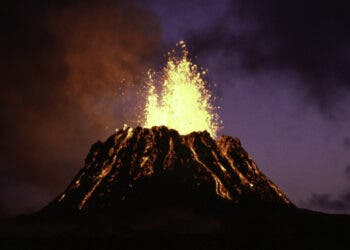This article was originally published in 2011 and has been reedited.
On rainy nights, the sky belongs to the raindrops. Birds have settled in, insects hide, and bats—nature’s only furry flying mammals—disappear. Why do bats avoid the rain? Is it because raindrops interfere with their echolocation? Or is there a deeper, more fundamental reason?
For years it was thought that the main reason bats don’t fly in the rain is because the mass of rain droplets is obstructing their flight. A study from Costa Rica says otherwise.

The study focused on Sowell’s short-tailed fruit bat (Carollia sowelli), a species native to the rainforests of Central America, where heavy rainfall is common. Researchers wanted to measure how rain impacts the bats’ metabolism while flying.
To do this, they captured ten adult bats and exposed them to three different conditions:
- Dry flight: Bats flew without exposure to water.
- Wet flight (no rain): Researchers moistened the bats’ fur and wing membranes.
- Wet flight (with rain): Bats were both wet and exposed to moderate rainfall.
The scientists measured the bats’ metabolic rates, or the amount of energy burned during flight, using a special method involving carbon isotope tracking. This allowed them to determine how much more energy was needed to sustain flight under different conditions.
Results were striking: When the bats were wet, their energy consumption doubled.
Researchers have several explanations for why water increases energy consumption so much. The first is extra weight. Wet fur holds water, increasing body mass. However, their calculations suggest that the water weight alone is insufficient to explain such a large increase in energy use. Thermoregulation is another factor: to stay warm in the rain, bats must burn more energy. Lastly, wet wings and fur make the bats less aerodynamic, requiring more power to generate lift and thrust.
Why some bats still face the rain the rain
Despite this energy expenditure, however, some bats still venture in (light rain).
Bats rely on flying to survive. Whether they are insect hunters or fruit foragers, they need to be airborne to eat. Whether or not they go out likely depends on food availability and energy balance. If food sources are rich enough to compensate for the extra energy burned, some bats may tolerate light rain to get a juicy reward.
However, for most species, the trade-off isn’t worth it. On a rainy night, a bat burning twice the energy for a flight might not consume enough food to compensate for the loss. Over time, this could be disastrous for survival.
Since bats are key pollinators and pest controllers, understanding what limits their activity is important for conservation efforts. As climate change increases extreme weather events, including heavy rainfall, scientists may need to consider how altered weather patterns impact bat populations.
So the next time you see a bat out in the rain, know that it’s fighting hard to stay in flight






